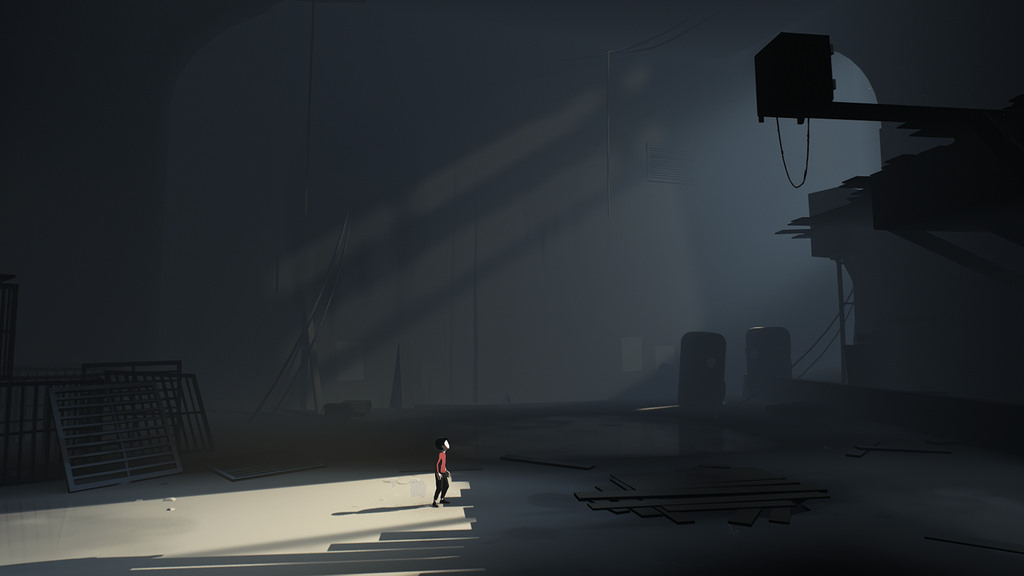Eerie dystopian platformer Inside profoundly unsettled and moved me in a way no other game has. Requiring no words or UI, it relies on intuitive design to guide the player. Nonetheless, its beautifully simple mechanics grab you into a sweeping pitch-black narrative that is as heart-rending as it is horrifying. Each immaculately crafted frame blends onto the next; drawn into one vast uninterrupted celluloid stretch that is part mechanical platformer and part half remembered Eldritch dream.
Much like its eerie predecessor Limbo, you awaken to a world hell-bent on killing you. Your numerous forms of demise — zapped into oblivion by lasers, drowned by an aquatic banshee, subsumed by a monstrous blob — are hilarious in their grim detail.
Whether its a sinister swell of music as you move onto new territory, or raindrops emerging through industrial smoke; the attention to detail in both sound, animation and visuals is sublime. Following one particularly unfortunate series of events, I found myself meditating on a backdrop punctuated by the soft rustle of grass and drifting motes of sun.
It creates a starkly beautiful world that is lonely in its wordlessness and savagery, where other humans only ever shoot at you or shamble mindlessly past you or peer at you through glass, creating a deeply unsettling feeling of yourself as the Other — which is ramped up in the game’s grotesque denouement.
Whilst the themes range across a vast scope of what it means to be human, the game ultimately leaves you to draw your own conclusions. I see Inside and its ilk as moving further toward games as an art form, whilst still being hugely entertaining and accessible.

